Exploring Ako’s Historical Streets and Coastal Resorts
This Hyogo Prefecture gem is renowned for its Amalfi-esque views, relaxing hot springs, and exquisite Sakoshi oysters.
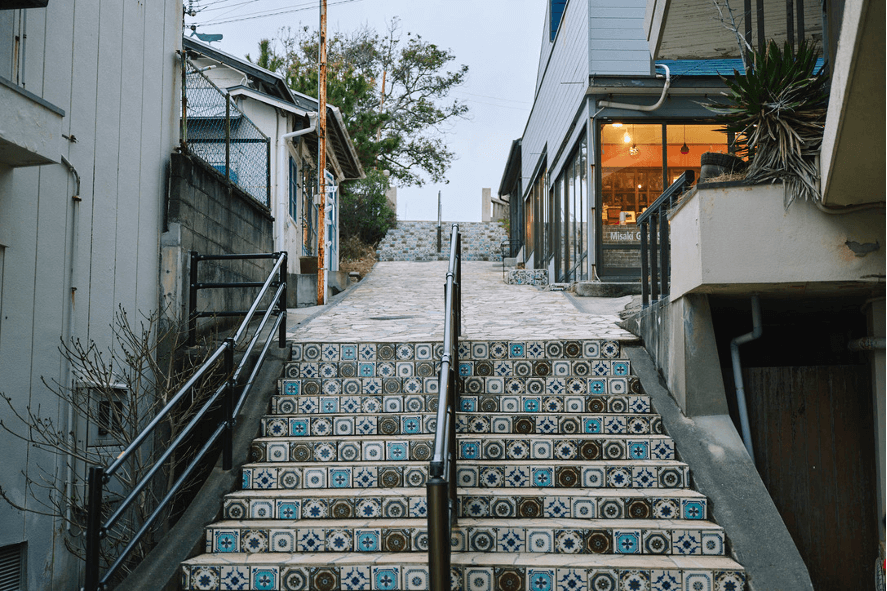
The story of the Genroku Chushingura, which has been portrayed in puppet theater and kabuki numerous times, recounts the tale of a group of samurai who avenged their lord’s death. The setting of this story is Ako City, the renowned ‘Land of Salt’. The coastal area facing the Seto Inland Sea offers breathtaking views reminiscent of the Amalfi Coast in southern Italy. At any time of day, you can enjoy the graceful, calm scenery; soak in the gentle hot springs of Ako; and savor the plump Sakoshi oysters. If you’re looking to enjoy a timeless encounter, be sure to visit the city of Ako, located at the southwestern tip of Hyogo Prefecture.
The Sakoshi area, blessed with a natural harbor
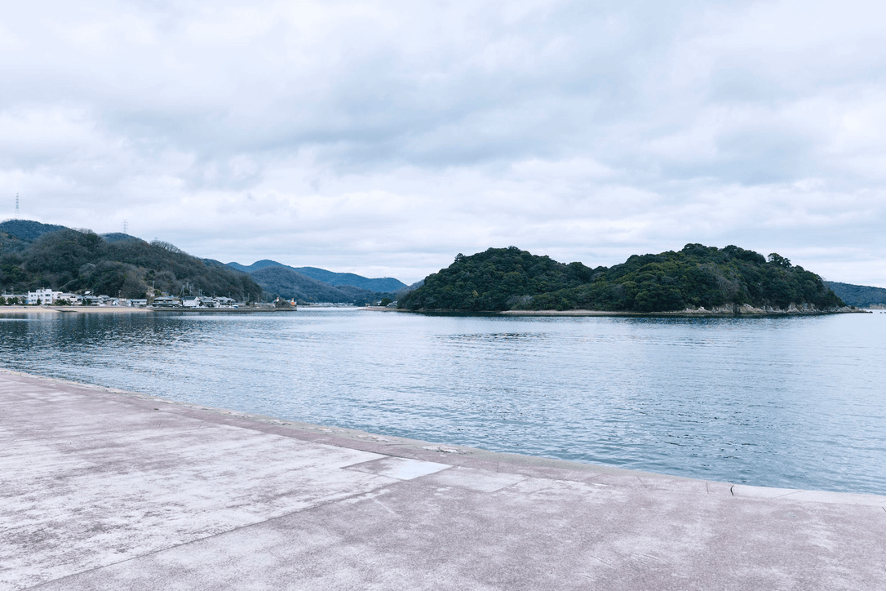
The Sakoshi Bay stretches around the island of Ikishima, which has been off-limits to people since ancient times, with a circumference of 1,630 meters. Indulge in the ocean’s milk nurtured by the blessings of mountains, rivers, and sea—the Sakoshi brand oysters.
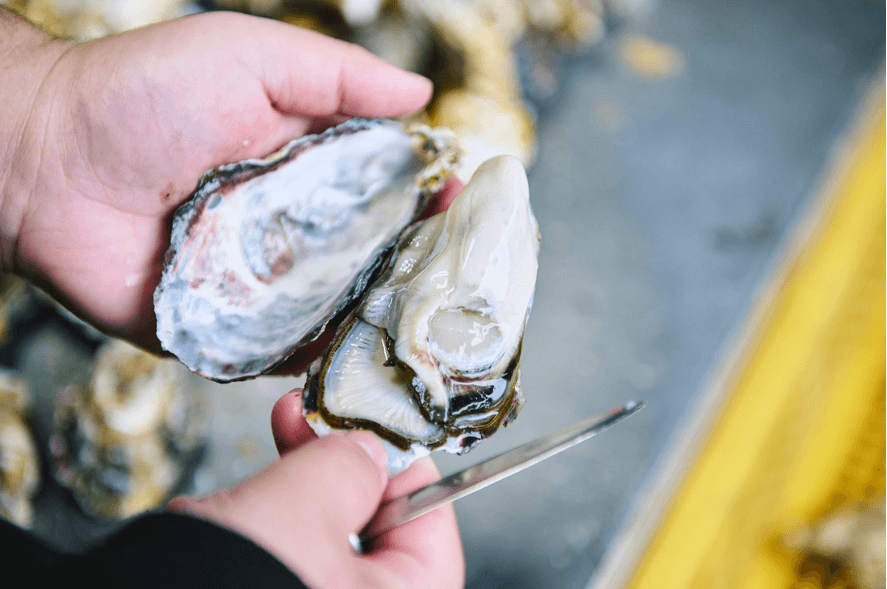
Freshly harvested oysters, brimming with nutrients, boast thick, succulent flesh and a smooth, silky texture that is pleasantly firm yet yielding.
Located near the estuary of the Chikusa River, one of Japan’s designated ‘100 Famous Waters,’ the Sakoshi Bay area, surrounded by forests, boasts one of the cleanest marine environments in the Seto Inland Sea. Oysters cultivated there are not only safe and hygienic but also benefit from the presence of the pristine forested island of Ikishima just off the bay, which allows high-quality plant plankton to thrive. With a growth period of approximately six months from seeding to harvest, these oysters have a quick maturation process. As a result, they possess a fruity flavor without the typical brininess or bitterness associated with seawater, making them enjoyable even for those who are not fond of oysters. These oysters, known as ‘Sakoshi kaki,’ are distributed nationwide.
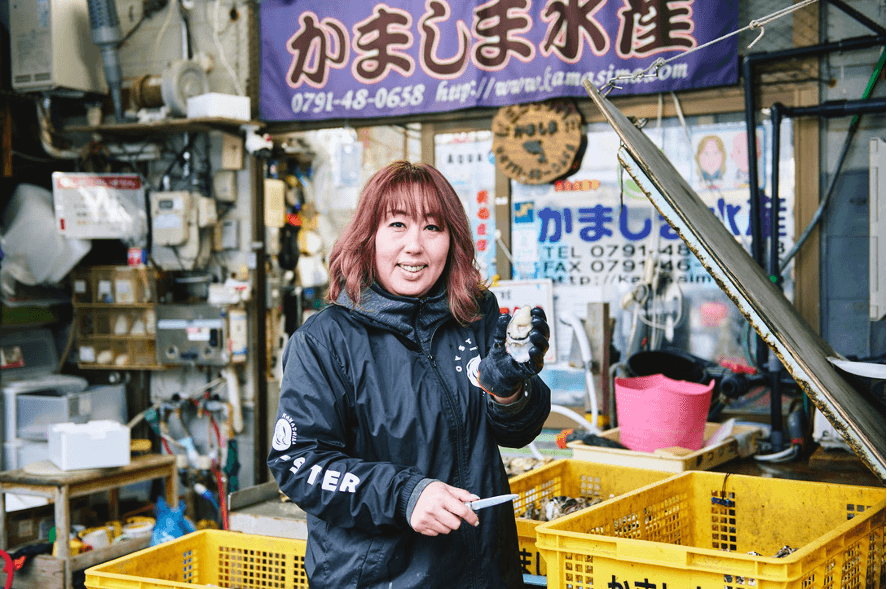
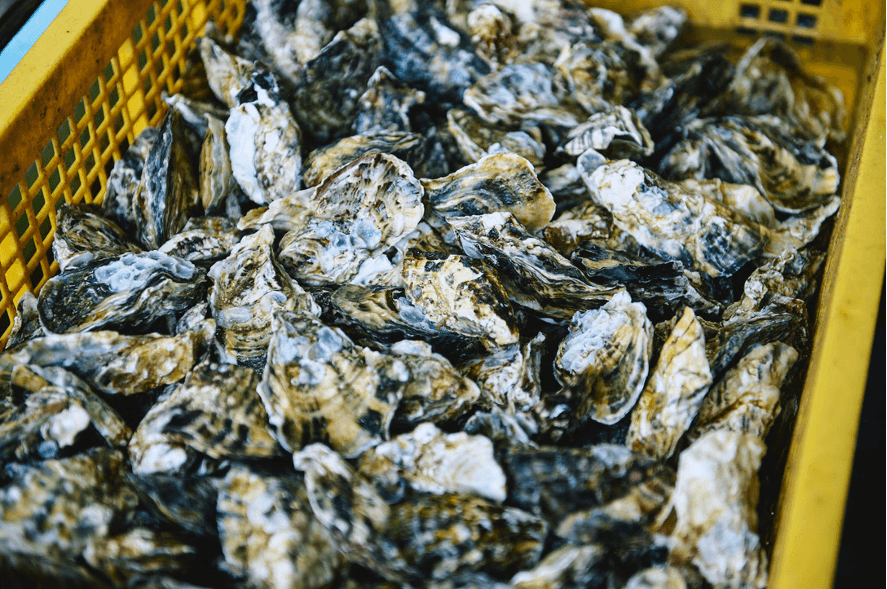
At Kamashima Suisan, the creator of the Sakoshi oyster brand, there is a formidable individual who represented Japan in the World Oyster Shucking Championship: Mrs. Noriko, the wife of the third-generation owner of Kamashima.
Safe-to-Eat Raw Oysters Owing to Sakoshi Bay's Clear Waters
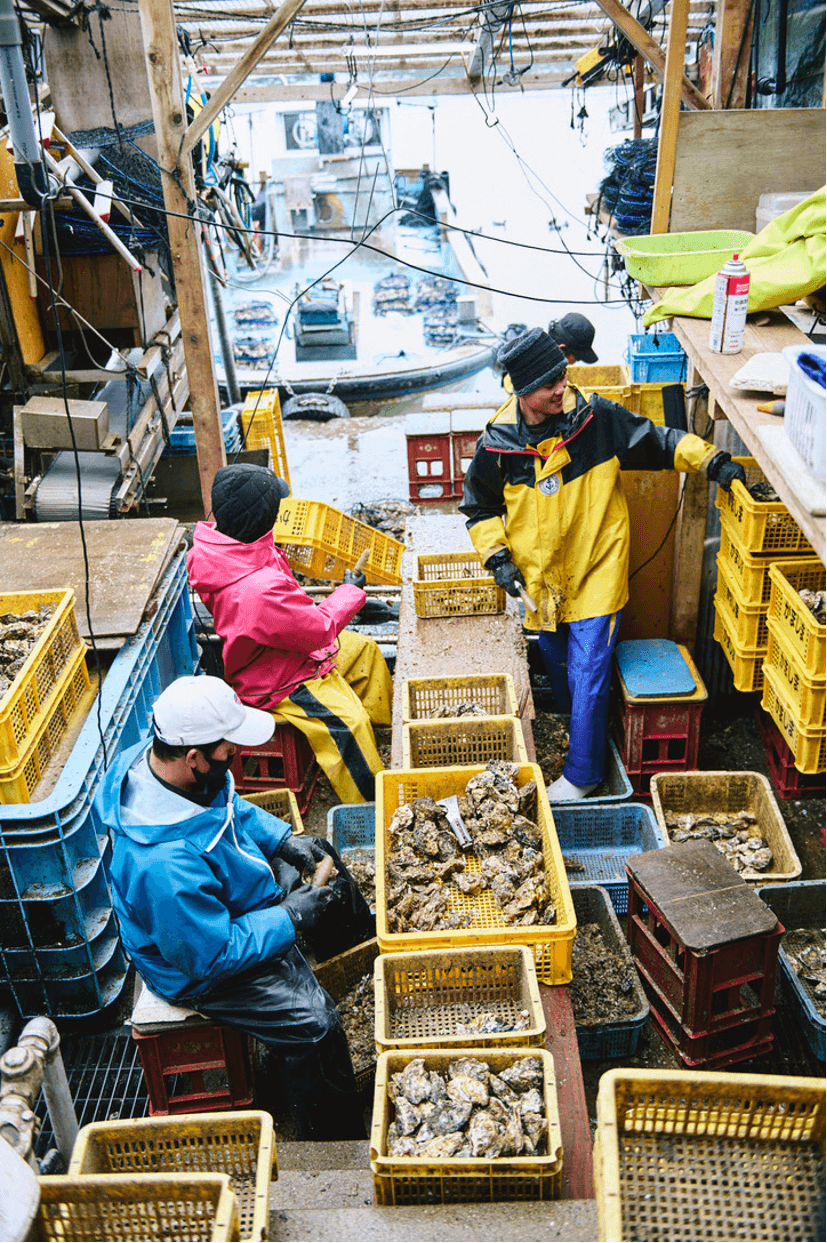
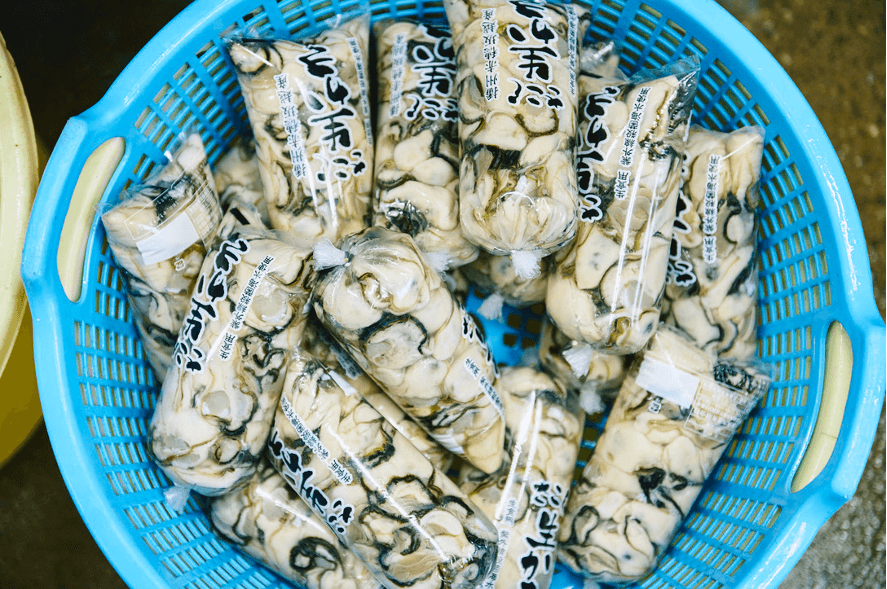
Sakoshi kaki oysters, both in shell and shucked (300 g), are priced at ¥1,100 per kilogram. Kamashima’s original brands, ‘Purimi’ and ‘Puresakoshi,’ in shell, are each priced at ¥2,500 per kilogram. Additionally, they offer delicacies such as an oyster paste, ‘My Lover,’ which was inspired by kimchi, shiokara (salted and fermented seafood), tsukudani (preserved in soy sauce), and crab miso, all priced at ¥1,000 each. These items can be stored at room temperature for two weeks or frozen for three months, and nationwide shipping is available for all products.
‘There are 13 oyster farming households here, including ours. Each fisherman has their own method of cultivation. It all began around 1960. In the past, this area prospered with summer fishing for shrimp, but there was no market in the winter, leaving fishermen idle, so, my grandfather-in-law brought oyster seeds from Miyagi and started cultivation. They thrived in the waters of Sakoshi, which is perfectly suited for oyster growth,’ says Mrs. Noriko.
‘Normally, oysters take about three years to grow, but Sakoshi oysters take only about half a year. Because of their rapid growth, they remain plump and firm even after steaming. Unlike in other areas where oysters must be disinfected with UV sterilized water before being shipped for raw consumption, there’s no such requirement in Sakoshi Bay due to its pristine waters. Some customers visit specifically to try raw oysters for the first time because they are safe and easy to eat.’
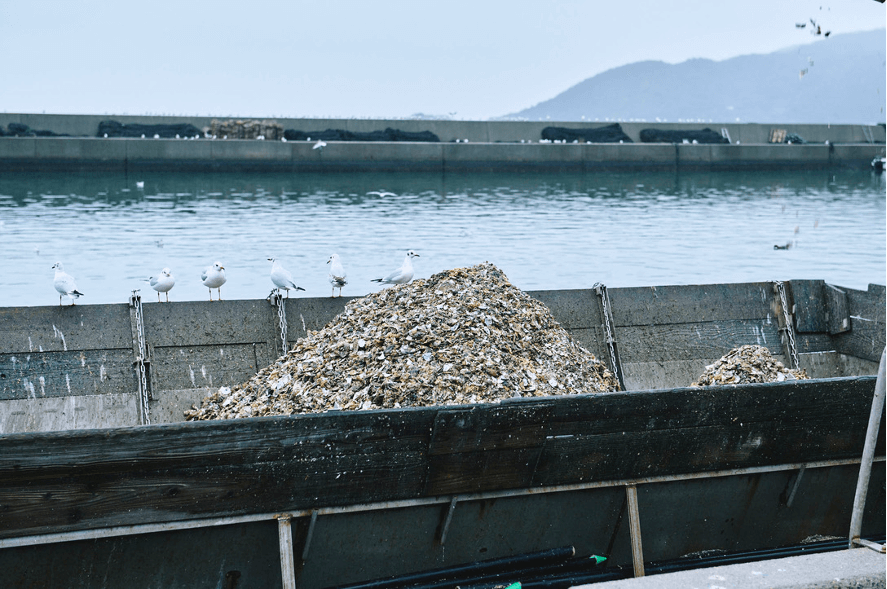
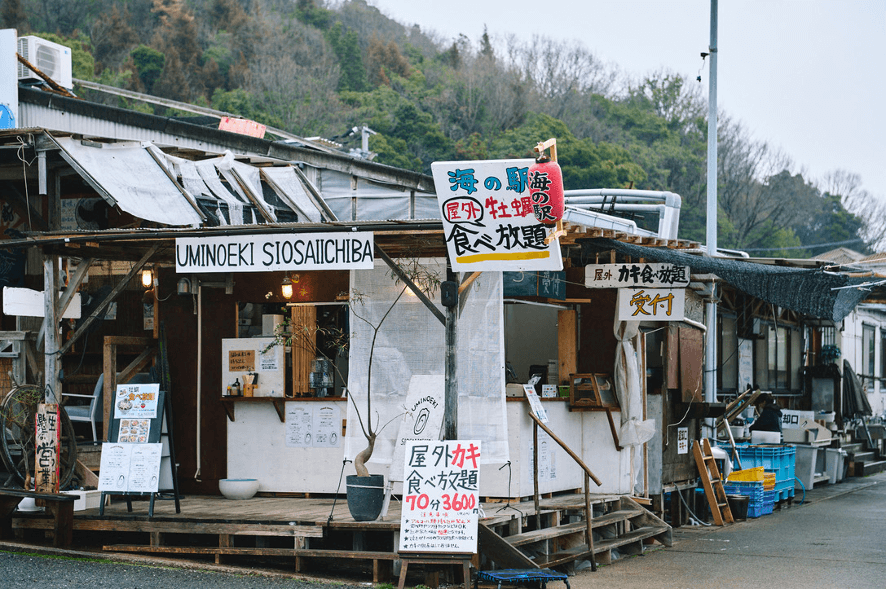
Located within the same area is the Umistation Shio-Sai Market, where visitors can purchase fresh seasonal seafood. There is also an oyster shack where you can enjoy all-you-can-eat oysters in the shell within a 70-minute time limit, priced at 3,600 yen per adult.
Kamashima Suisan
319 Sakoshi, Ako City, Hyogo Prefecture
TEL: 0791-48-0658 (Reception hours: 6:30 AM – 2:00 PM)
Business hours: 8:30 AM – 4:00 PM
Closed on Tuesdays
You can enjoy exquisite oyster cuisine near Banshu-Ako Station.
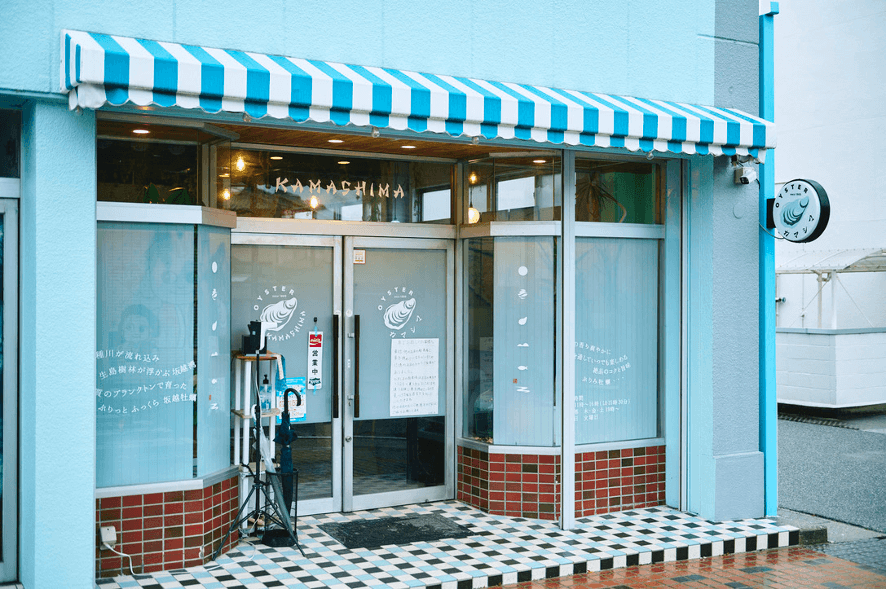
Despite Sakoshi kaki becoming popular nationwide, there were no oyster specialty restaurants in town until Oshokujidokoro Kamashima opened, driven by the enthusiasm and determination of the fishermen. The owner is Noriko, the renowned proprietress of Kamashima Suisan introduced earlier. At the restaurant, you can first savor the silky Sakoshi oysters with their original brands Purimi and Puresakoshi, which pair perfectly with wine and champagne, in the ‘Comparison Set of Raw Oysters’ (1,280 yen), featuring 100% Sakoshi oysters raised from spawn harvested in Sakoshi Bay. For those craving a hearty meal, the ‘Chushingura Gozen’ (1,980 yen) offers a feast of raw oysters, grilled oysters, fried oysters, oyster soup, and mini oyako-don (oyster and egg rice bowl), providing a variety of oyster delights.
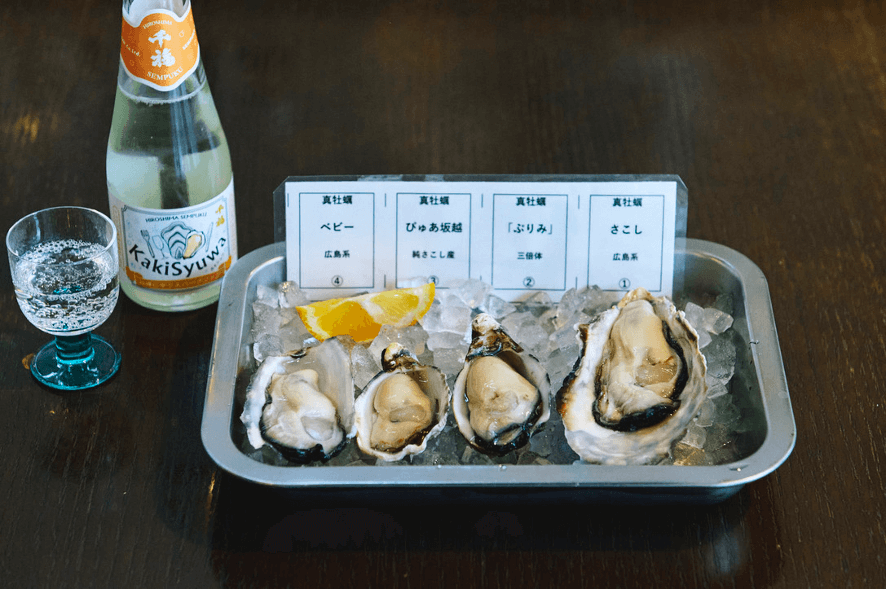
The ‘Comparison Set of Raw Oysters’ is accompanied by Kakishuwa (1,155 yen), a sparkling sake developed to enhance the enjoyment of oyster cuisine.
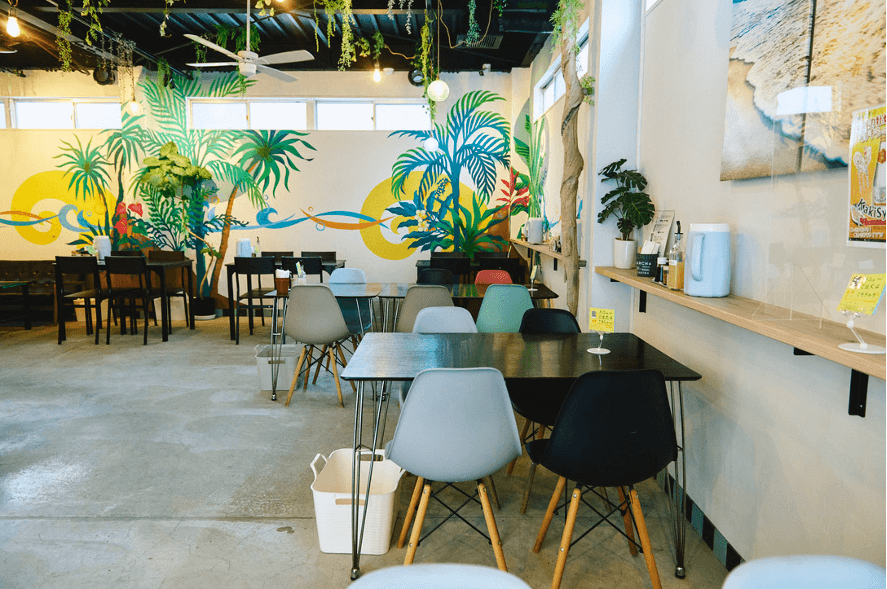
Kamashima Oshokujidokoro
89-5 Kariya, Ako City, Hyogo Prefecture
TEL: 0791-56-5050
Business Hours:
[Monday to Sunday]
11:00 AM – 4:00 PM (Last order at 3:30 PM)
[Thursday to Saturday]
11:00 AM – 4:00 PM (Last order at 3:30 PM), Evening Hours: 7:00 PM onwards
Closed on Tuesday
The secret lies in the dashi broth made from konbu (kelp) and bonito flakes. This rich broth infuses the batter, making it the cornerstone. In the realm of savory pancakes, a staple of Japanese comfort food culture known as okonomiyaki, generous amounts of oysters are added to elevate the dish.
Oyster ‘Okonomiyaki’
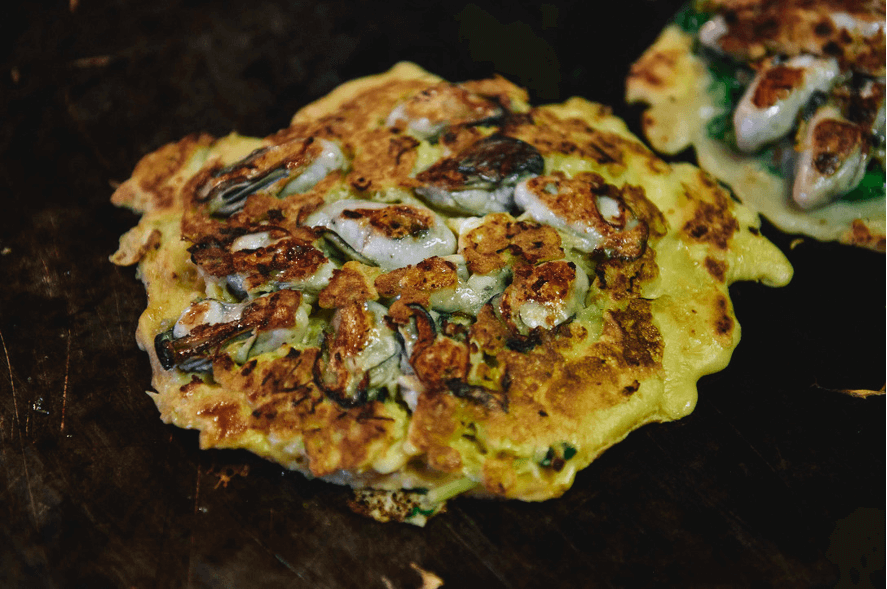
Okonomiyaki with large Sakoshi oysters comes in two options: one with 100 g of oysters priced at 1,200 yen, and another with 150 g of oysters priced at 1,600 yen.
As part of the current worldwide Japanese food boom, okonomiyaki, a representative of Japan’s flour-based cuisine culture, is experiencing a surge in popularity. Its appeal lies in its generous portion size, ease of preparation, and versatility in customization. In the past, along the coastal areas of the Seto Inland Sea, including Ako, there used to be numerous okonomiyaki restaurants following the Hiroshima tradition. However, nowadays, there are only a handful of establishments, with less than ten still in operation. Among these, Okonomiyaki Minatoya, founded in 1995, stands out as a cherished spot. Inside the restaurant, posters adorned with photographs of regular customers, skillfully captured by the owner, Hiroyuki Minato, an enthusiast of photography, ornate the walls.
The key to its flavor lies in the batter recipe inherited from Mr. Minato’s mother, which incorporates dashi broth made from konbu and bonito flakes. Other key ingredients include Ako’s renowned Harushio salt and local Chushingura sake. When you take a bite, the plump oysters, fluffy batter, and slightly sweet sauce intertwine to create a harmonious richness. This blend of flavors exemplifies the essence of Ako’s okonomiyaki.
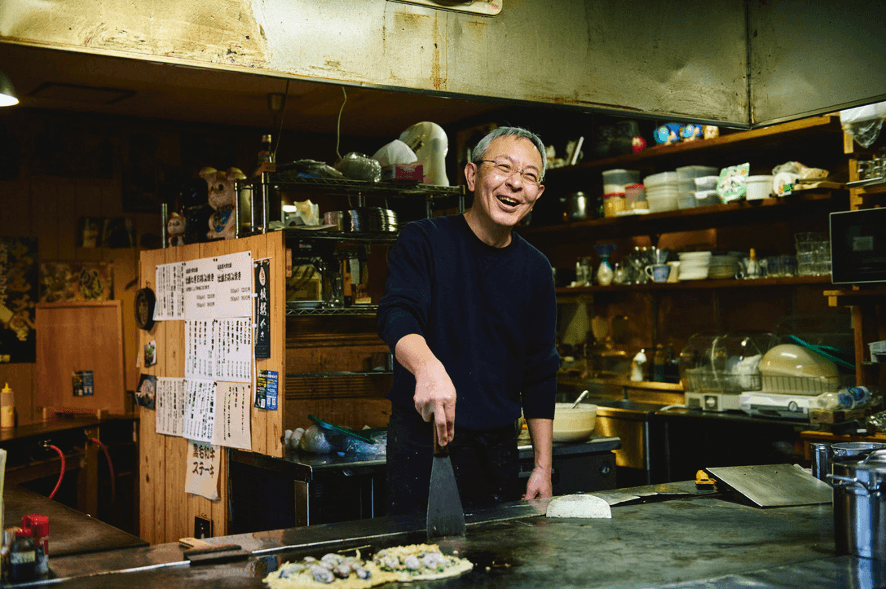
It is said that there have been offers for apprenticeship from former regular customers who now work as chefs at luxury hotels in Washington, DC.
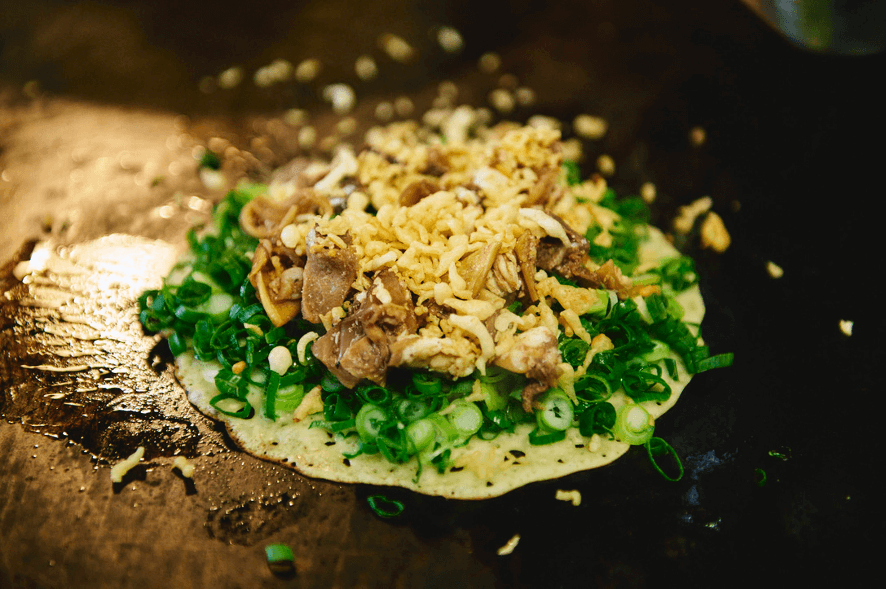
In addition to oysters, there are other irresistible teppanyaki delights for B-grade food lovers, such as Negikoro okonomiyaki (pictured above, 700 yen) with a satisfying texture containing beef tendons, green onions, and konjac; a healthy okonomiyaki (900 yen) mixed with tofu and shiitake mushrooms in the batter; and Kansai-style Horumon Udon (900 yen), featuring offal. Each menu item can be customized, and adding a slightly spicy sauce enhances the depth of flavor with the kick of spices.

The owner has diligently crafted the signage and exterior walls with a retro Showa-era DIY aesthetic, adding to the charming ambiance of the place.
Okonomiyaki Minatoya
38-3 Ekimaecho, Ako-shi, Hyogo
TEL: 0791-42-9939
Hours: 11:30 AM – 1:30 PM (LO), 5:00 PM – 7:00 PM (LO)
Closed on Tuesdays
After filling your stomach, take a stroll through the romantic streets steeped in history for a trip back in time.
Feeling the Spirit of Old Japan While Walking Along Renovated Folk Houses
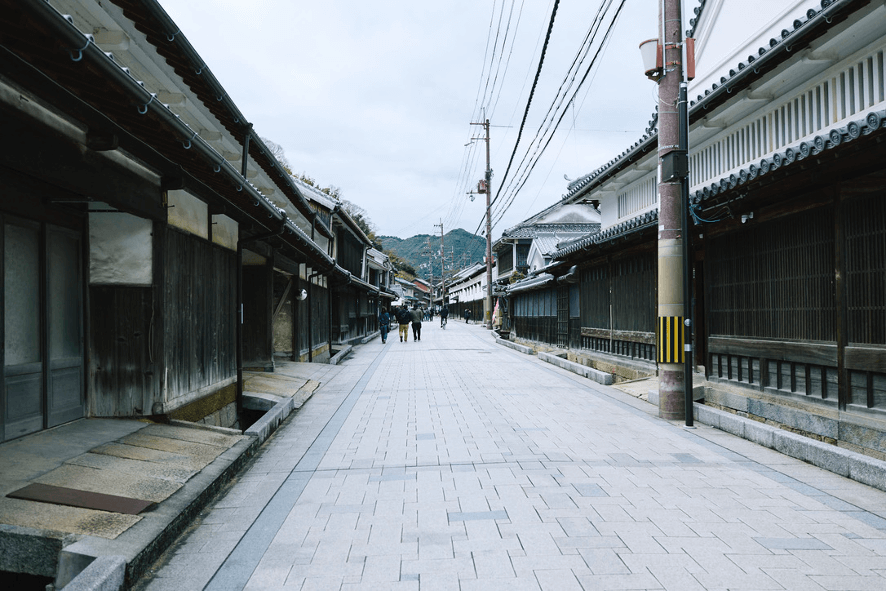
The Daido (main road) of Sakoshi extending from the Chikusagawa River to Sakoshi Bay is the main street of the former castle town. Along the cobblestone path, there are various shops, cafes, and long-established sake breweries renovated from old folk houses, creating an atmosphere reminiscent of the Edo period. Walking through the streets, one can feel the spirit of old Japan while also enjoying trendy experiences inside the shops.
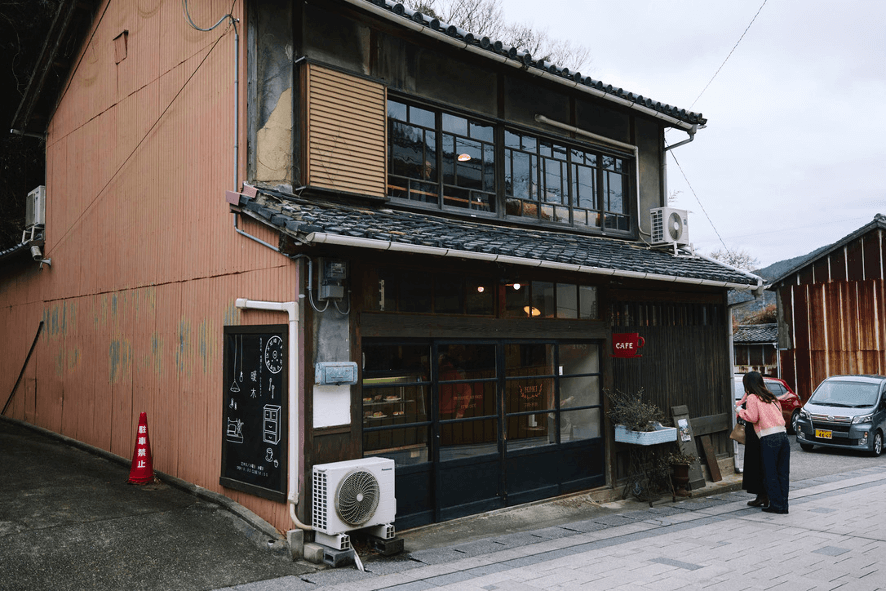
Nonki Café
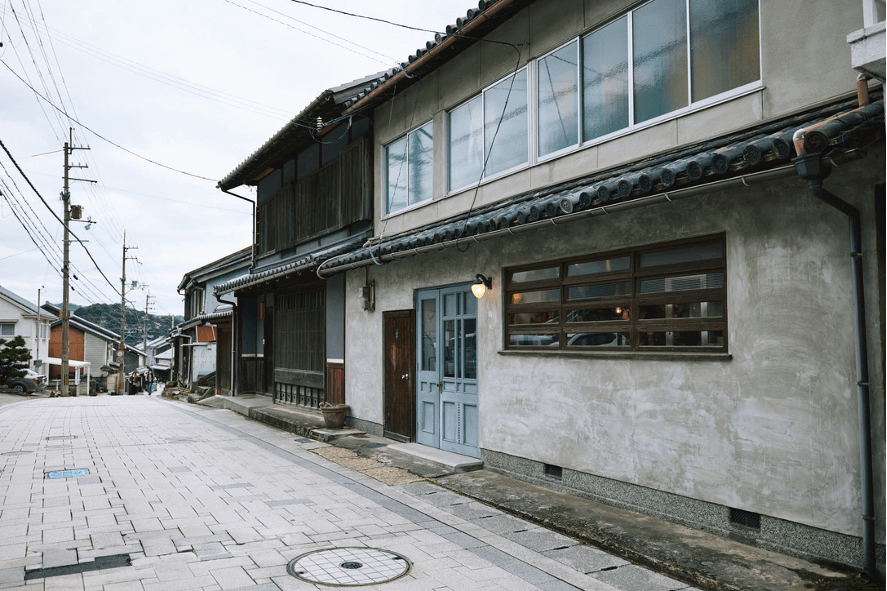
Tsumugi shop
Nonki, renovated from a geta (Japanese wooden clog) shop from the late Taisho period, is a café that emphasizes carefully selected antique furniture and lighting chosen by the owner. One of their popular menu items is the Ichijuu Sansai Teishoku (One Soup, Three Dish Set) priced at 1,650 yen, made with rice and vegetables grown on their own farm. Fifty meters down the cobblestone path, you’ll find Tsumugi, a sister shop offering unique miscellaneous goods and accessories.
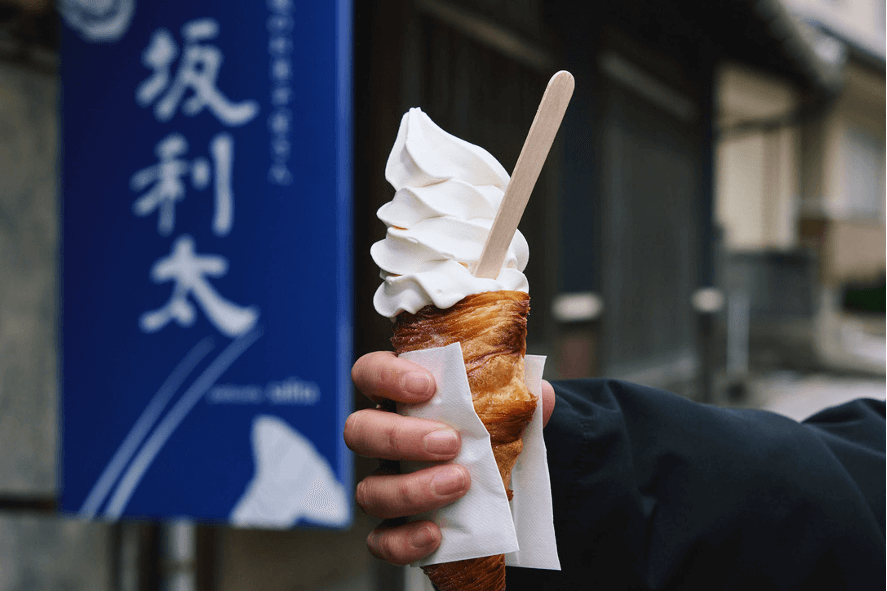
Fresh Milk Soft Serve

Ocean's Milk
The Fresh Milk Soft Serve and the rich Ocean’s Milk containing oyster extract, are both priced at 600 yen.
A bustling line leads to Sarita, a specialty store for Aragosta, a traditional Neapolitan pastry. Supporting the soft serve is a crispy and flaky pastry crust called tappi, which has a slightly salty taste. The dough, made from wheat flour imported directly from Italy, is stretched to its utmost thinness, then layered multiple times and rolled up by hand. Inside, it’s filled to the brim with homemade custard cream, allowing for a luxurious taste transformation with every bite of soft serve. With lemon zest and other ingredients, it leaves a refreshing and addictive taste. This delicacy is produced by the head chef of SAKURAGUMI, which will be introduced later.
The coastal scenery of the Misaki area is reminiscent of Amalfi.
The Misaki Area, Coastal Scenery Reminiscent of Amalfi
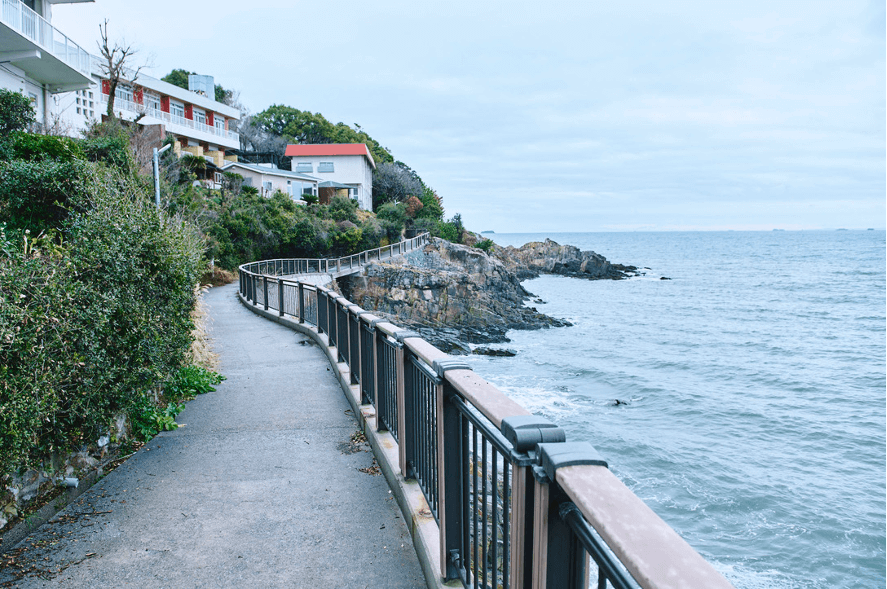
Sarita, a genuine Italian Naples cuisine restaurant with ocean views just down Kirakira-zaka. A promenade following the coastline, weaving through rocky shores. There are even times when dolphins come to play nearby.
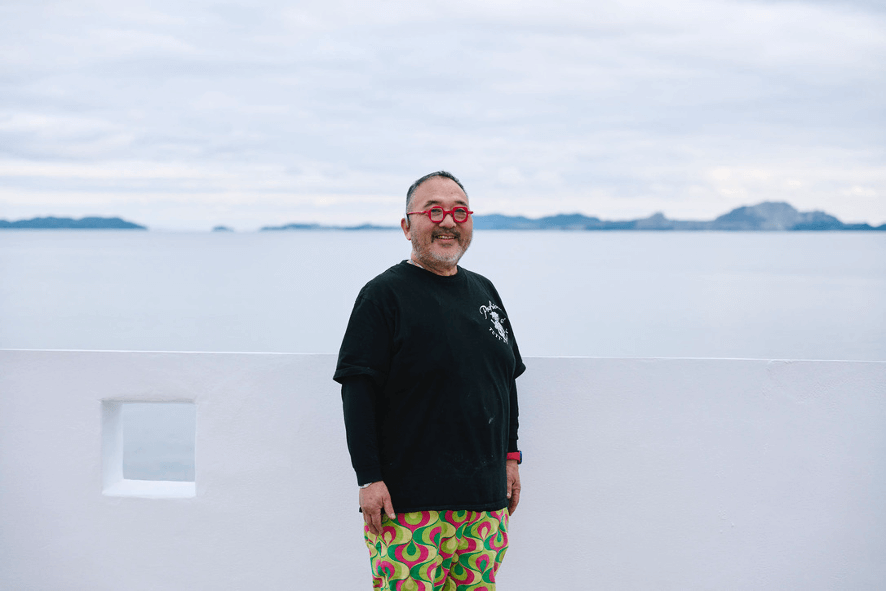
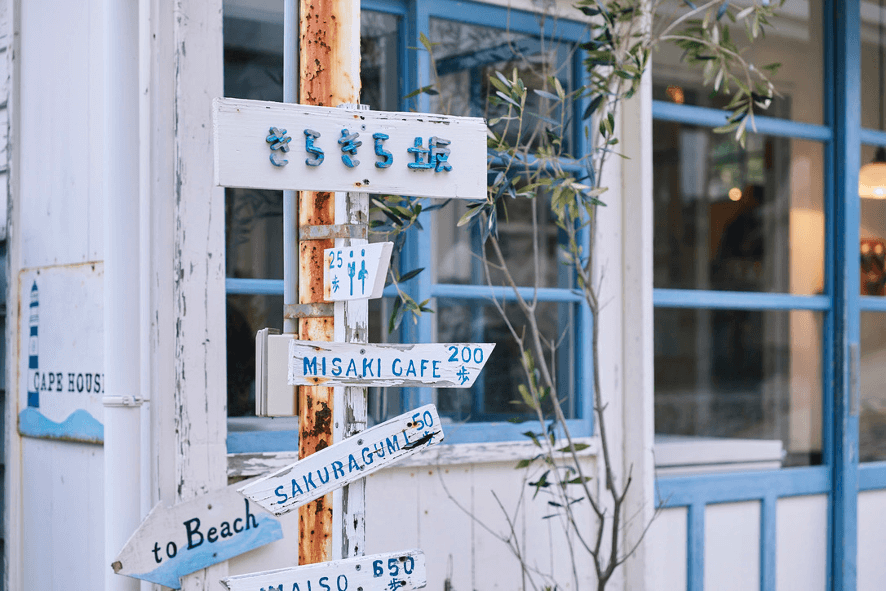
Chef and owner Mr. Akio Nishikawa, who named the area ‘Kirakira-zaka’ (Sparkling Hill), is considered a driving force behind Misaki’s recognition as a ‘Lover’s Sanctuary.’
On sunny days, the sparkling sea at Misaki is dazzling. When Mr. Nishikawa visited Naples, he was struck by how the scenery at Misaki resembled that of Naples, inspiring him to transform Misaki into a resort destination similar to Naples. As the first Japanese to join the ‘Associazione Verace Pizza Napoletana’ (True Neapolitan Pizza Association), SAKURAGUMI has since gained attention as a restaurant where you can taste authentic Neapolitan cuisine.
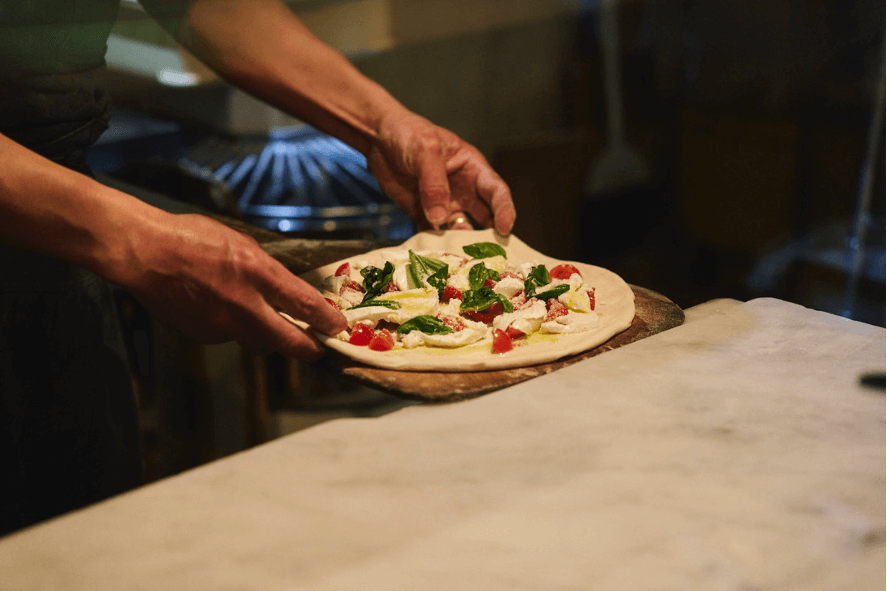
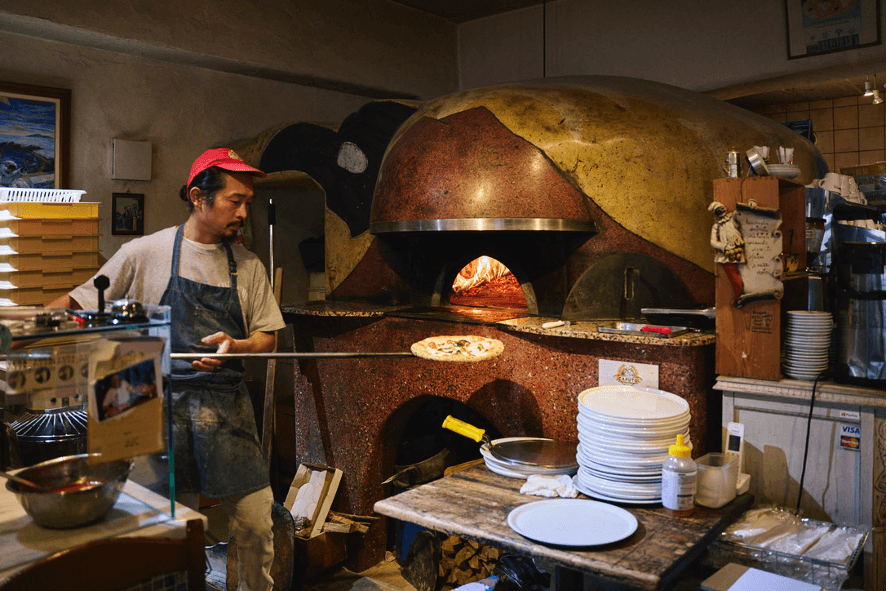
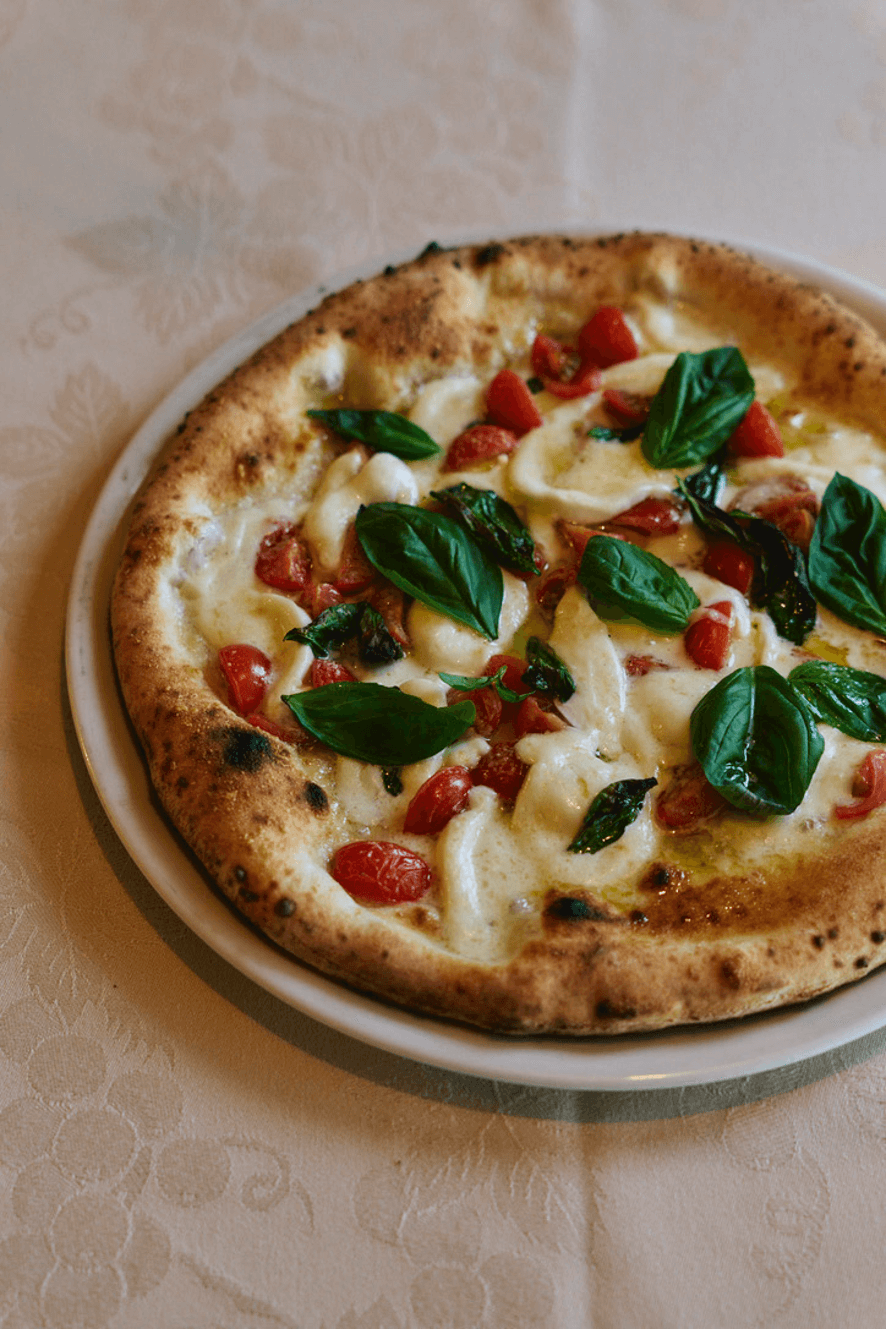
The Pizza Margherita Bianca, which faithfully reproduces all aspects of traditional Neapolitan pizza making, including the oven, ingredients, and techniques, is priced at 2,080 yen.
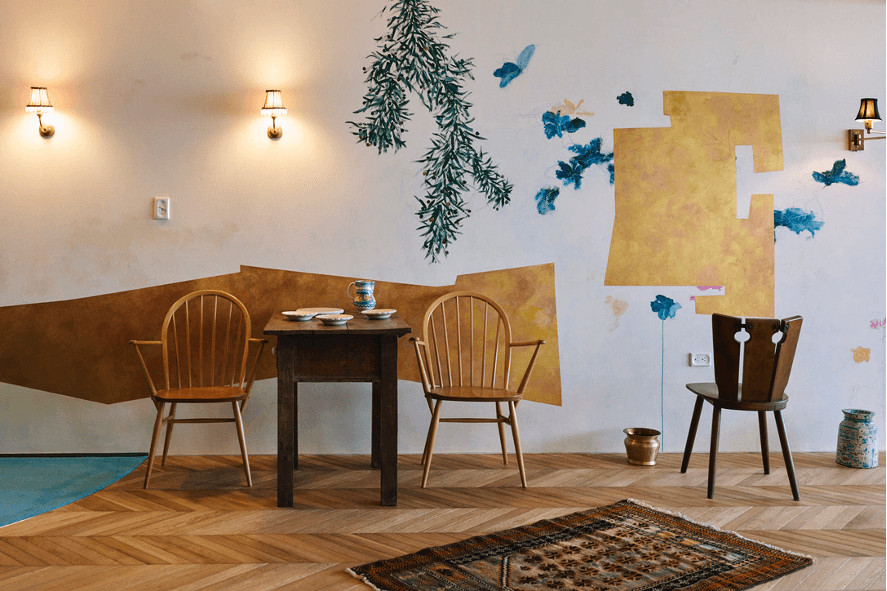
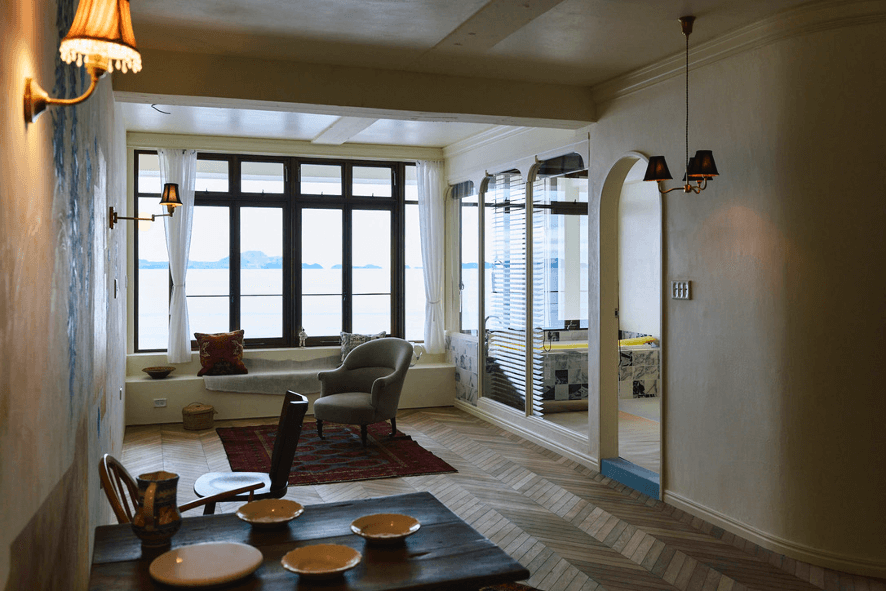
In the enchanting atmosphere of Misaki, filled with exotic charm, we hope you enjoy delicious cuisine surrounded by nature and rejuvenate your soul. With that in mind, Mr. Nishikawa has opened a luxurious guesthouse on the second floor of SAKURAGUMI. This guesthouse, limited to two groups per day, allows two people to stay for 45,000 yen per person per night (excluding tax). In the bathroom, antique tiles from Italy dating back 400 years adorn the floors, and on the rooftop sauna, you can relax while gazing at the sea. How about waking up to the morning sun shining on the water’s surface and experiencing a rich resort-like awakening?
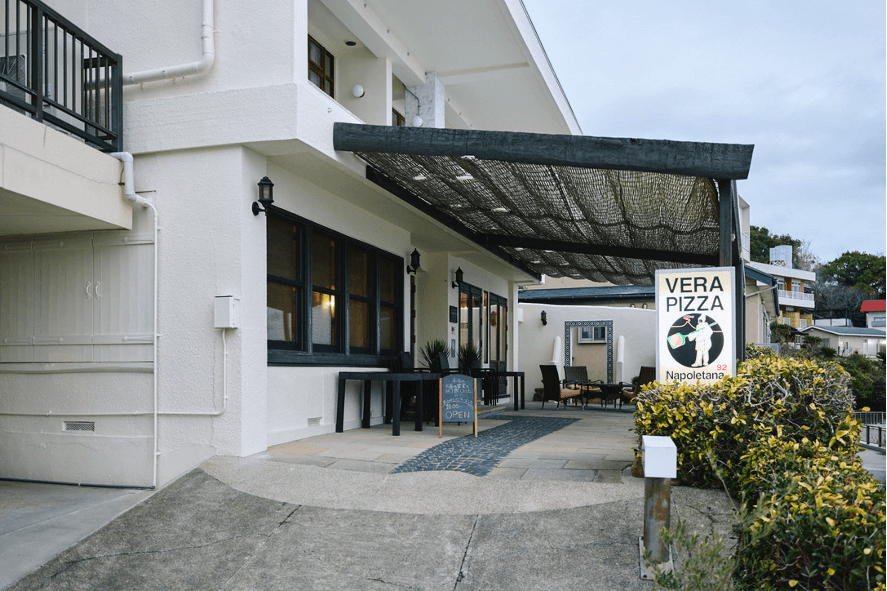
SAKURAGUMI
2-1 Misaki, Ako City, Hyogo Prefecture
TEL: 0791-42-3545 (Reception hours: 9:00 AM – 9:00 PM)
Business Hours:
LUNCH: 11:30 AM – 3:30 PM (Last order at 2:30 PM)
DINNER: 6:00 PM – 10:00 PM (Last order at 8:30 PM)
Closed: Every Tuesday, the 1st Wednesday, and the 3rd Monday & Wednesday of the month
In the open-air bath by the shore, both body and mind are liberated as you immerse yourself in the poetic beauty of the Seto Inland Sea’s archipelago.
Ako Onsen, ‘The Resurrected Hot Springs’

The Ako Onsen, also known as the ‘Resurrected Hot Springs,’ is a neutral saline hot spring rich in mineral components, known for its smooth texture and high moisturizing effect on the skin. At Ginpaso, where two outdoor baths blend into the horizon, the evening is a prime time to soak as the setting sun descends directly in front of the bath, offering a stunning view. At night, the flames of the bonfire reflect the stars on the surface of the water, allowing guests to enjoy an elegant time while immersed in the grandeur of nature.
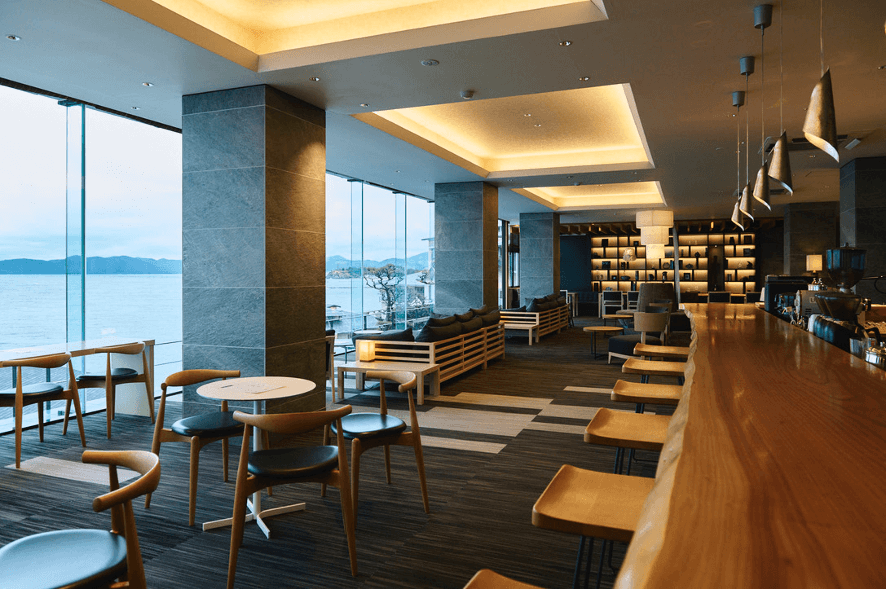
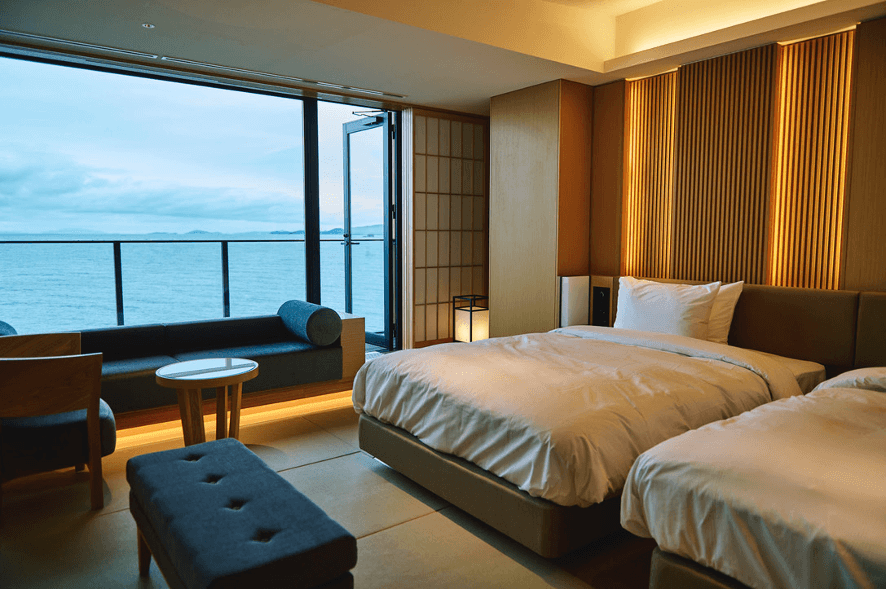
At Ginpaso, the recommended way to spend your time is by doing absolutely nothing. Simply gaze at the tranquil Seto Inland Sea, visible from both the lobby lounge and the windows of your room. You’ll find that just by observing the calm sea, your mind naturally settles. The room shown in the photo is a special room, priced at 90,000 yen for two people, including dinner and breakfast.

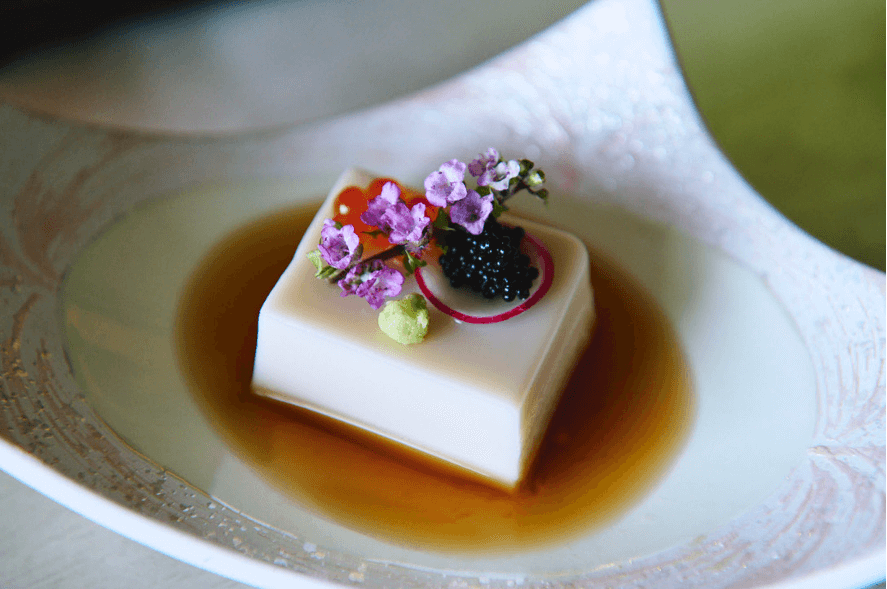
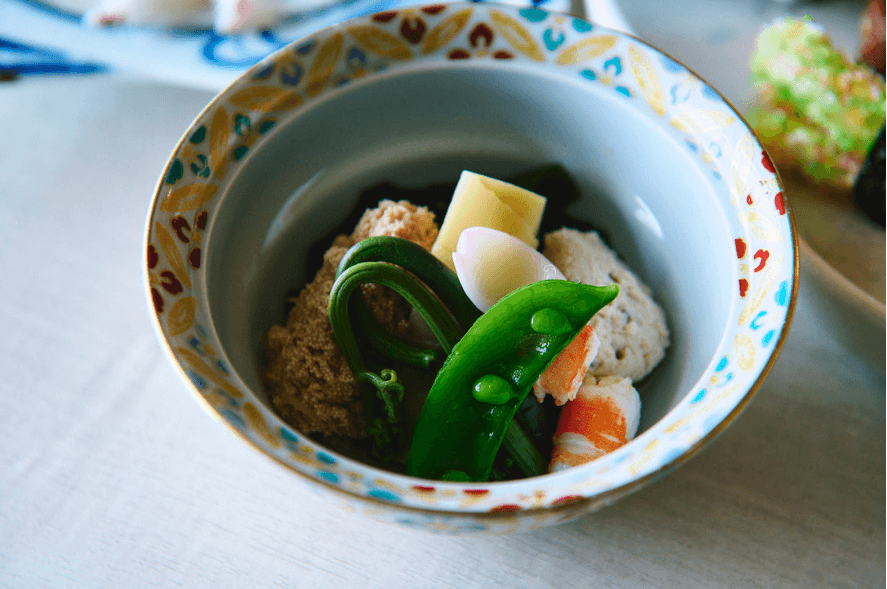
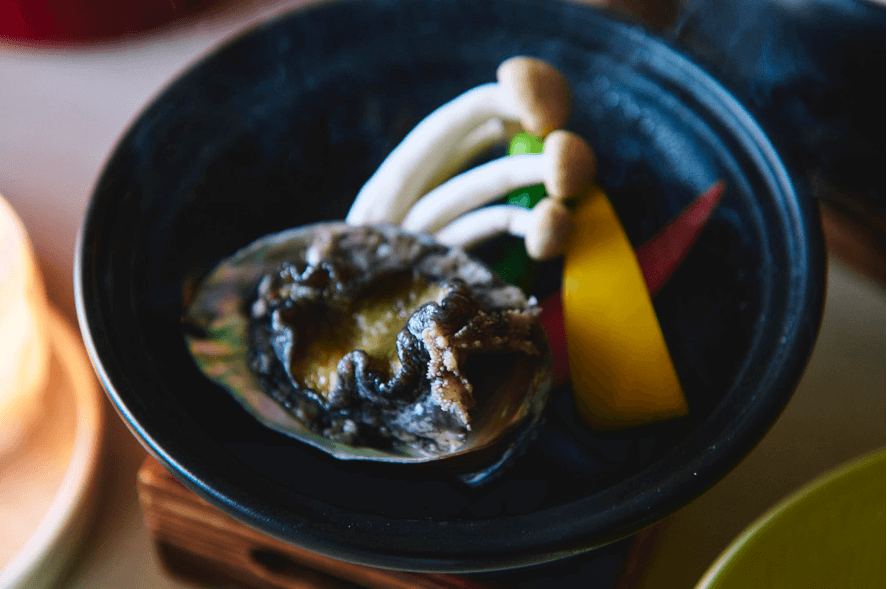
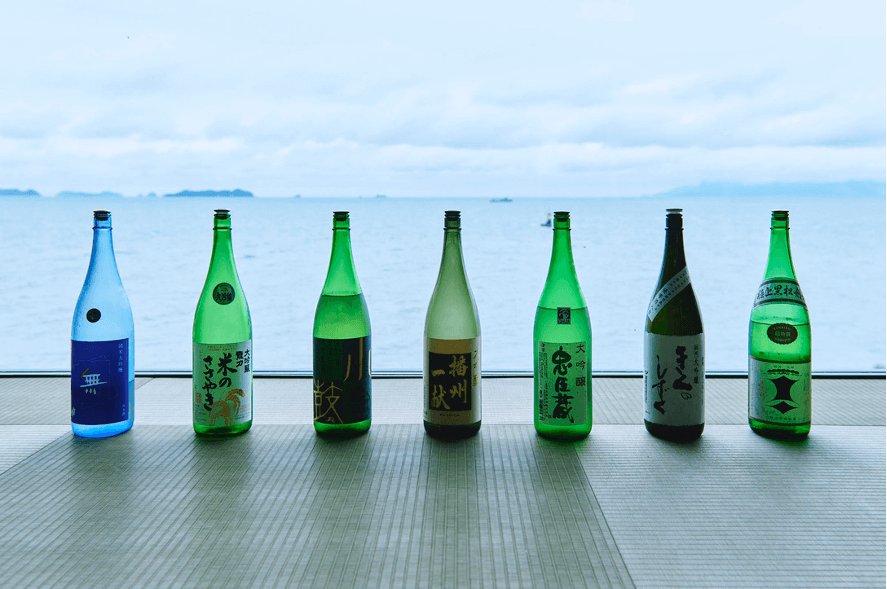
For dinner, indulge in creative Japanese cuisine featuring an abundance of Seto Inland Sea seafood and seasonal delicacies, paired with local sake from Harima. The menu shown is the Hinamatsuri Kaiseki for March. The main dish is Sakura Tai (sea bream), a spring delicacy accompanied by sashimi, shabu-shabu, and kamameshi (kettle-cooked rice). Other options include abalone sashimi, whitefish tempura, and assorted simmered dishes, totaling 13 items.
Ginpaso
2-8 Misaki, Ako City, Hyogo Prefecture
TEL: 050-2018-0878 (Reception hours: 9:00 AM – 6:00 PM)
To conclude your journey, admire the revived and timeless beauty of Ako Nishijin, a traditional craft that transcends time.
The ‘Ako Nishijin’ Traditional Craft of Weaving
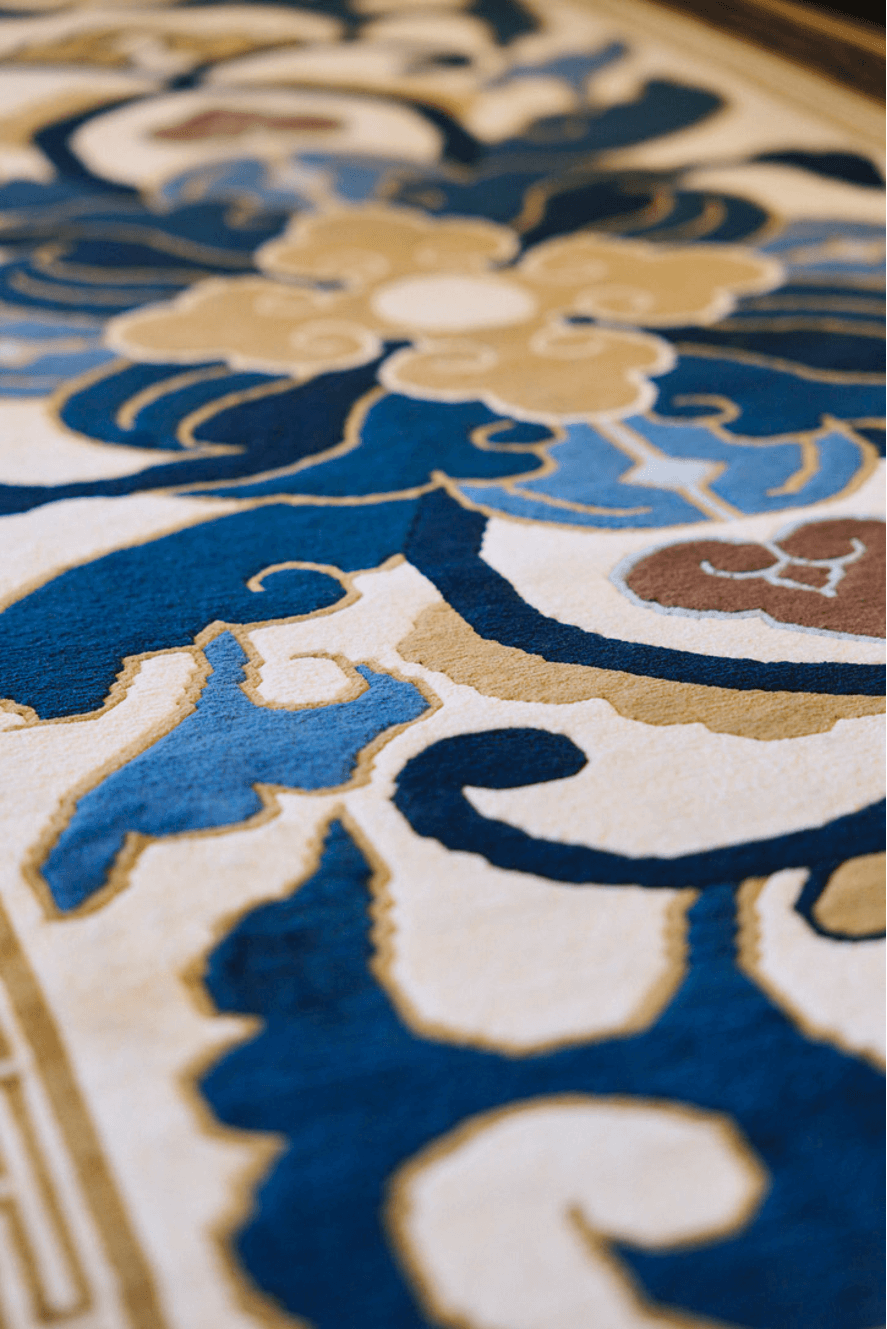
The Kani Botan (Crab Peony) and Enniju Rai (Double-edged Thunder) patterns are classic motifs woven into Ako Nishijin textiles representing some of the typical designs. These patterns have been woven since before World War II and are prominently featured in the Byōbu (folding screens) Festival of the Gion Matsuri in Kyoto. The price of the product is 3,080,000 yen.
In the southern area of Ako, which was opened up due to the development of salt fields, there is a traditional craft called Ako Nishijin, which flourished thanks to the labor force of women. In 1874, a woman named Naka Kojima spent nearly 30 years of trial and error to perfect it. Alongside Nabeshima Nishijin from Saga Prefecture and Sakai Nishijin from Osaka Prefecture, Ako Nishijin is now known as one of Japan’s three major Nishijin weaving styles. Ako’s products are characterized by tightly woven threads and grooves at color boundaries.
The standard size is equivalent to one tatami mat. Patterns often feature auspicious motifs, such as peonies and thunder, with indigo, brown, and white being the primary colors. At Ms. Ikegami’s workshop, only the highest-quality combed cotton yarn is custom-ordered, and products woven with this yarn develop more character over time with prolonged use. Some customers have passed down these items for three generations. Currently, instead of dividing the labor, each artisan handles all processes, so even veteran craftsmen require around 8 months to complete a single piece. The current waiting time to purchase a finished product is around 3 years.
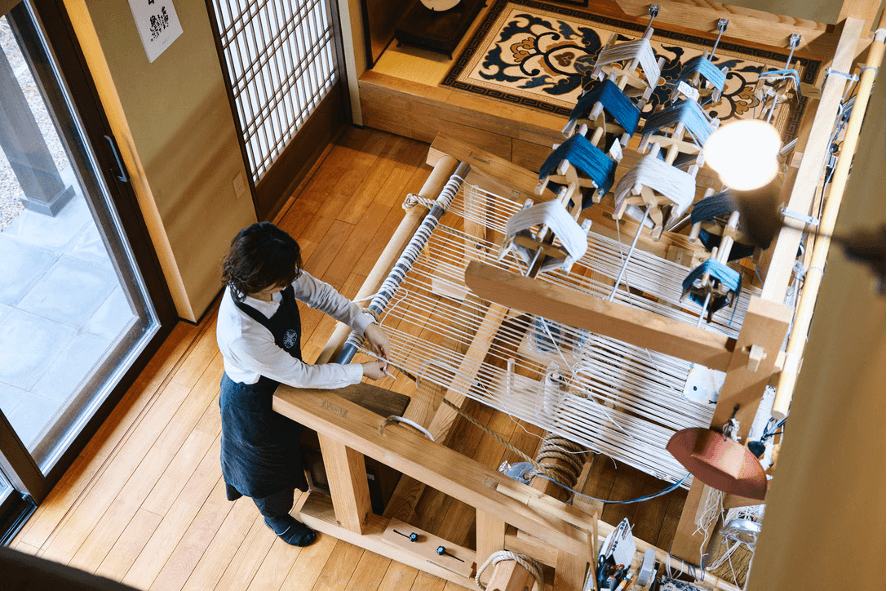
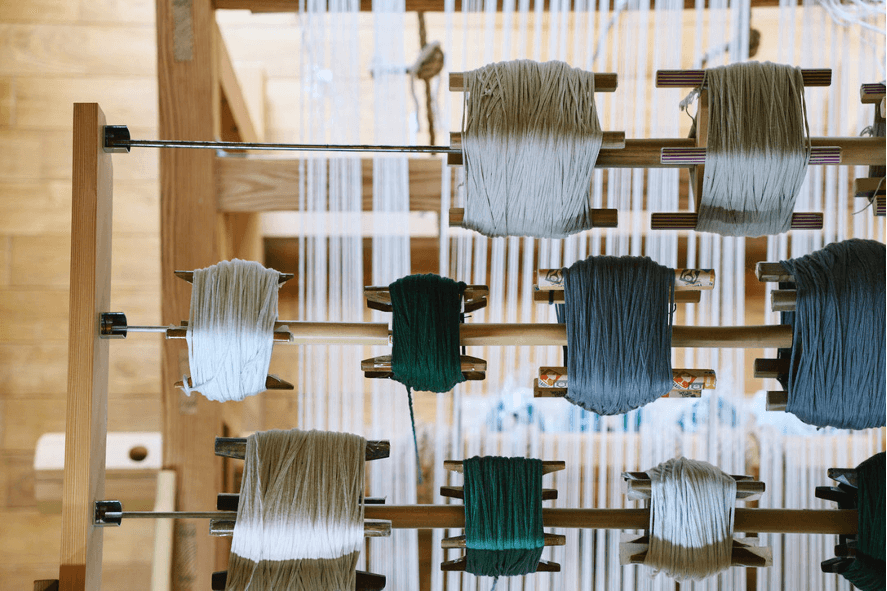
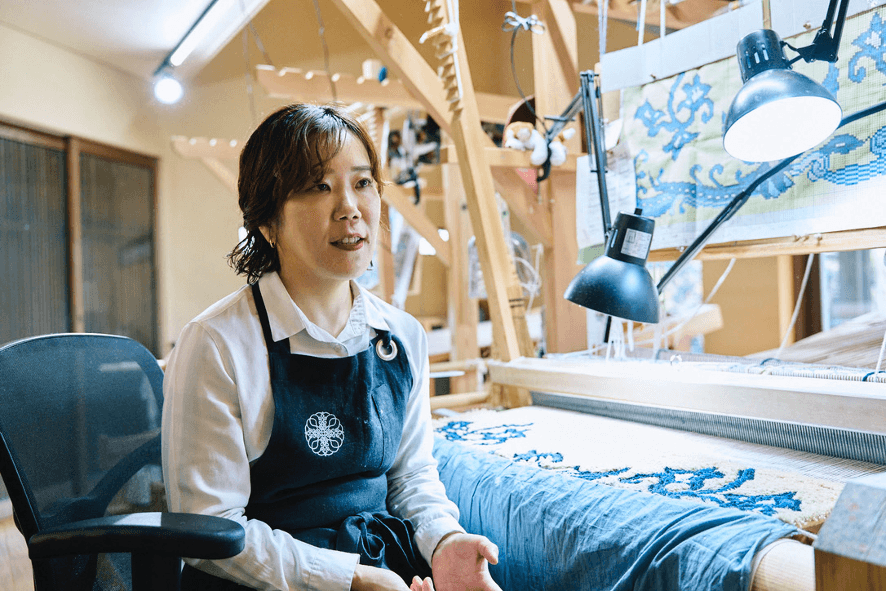
Kazuko Ikegami, its representative, inherited Ako Nishijin from her grandmother who ran the workshop as a manager. The gallery hosts experiential workshops for visitors.
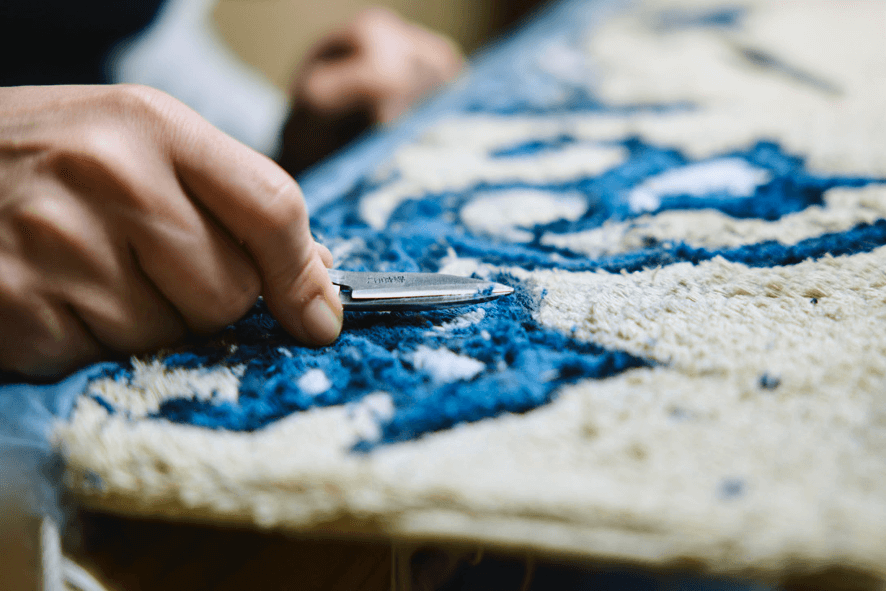
Hand-picking, which accounts for 80%–90% of the process, utilizes a unique pair of waist-bending scissors specifically designed for Nishijin weaving, a skill that only a few artisans in Japan have mastered. To ensure uniform thickness, threads are trimmed parallel to the fabric, resulting in a velvet-like texture.
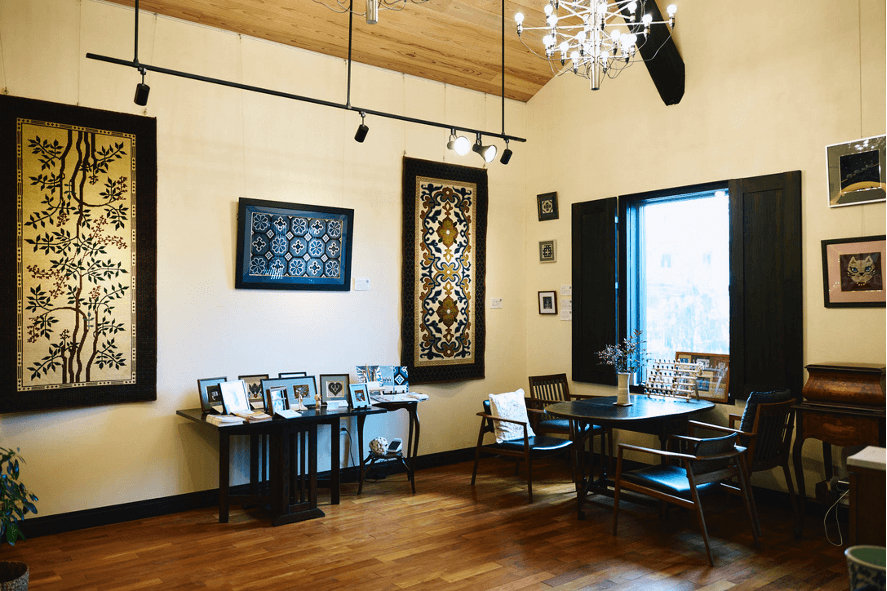
The products range from 55,000 yen for items measuring 15 cm2.
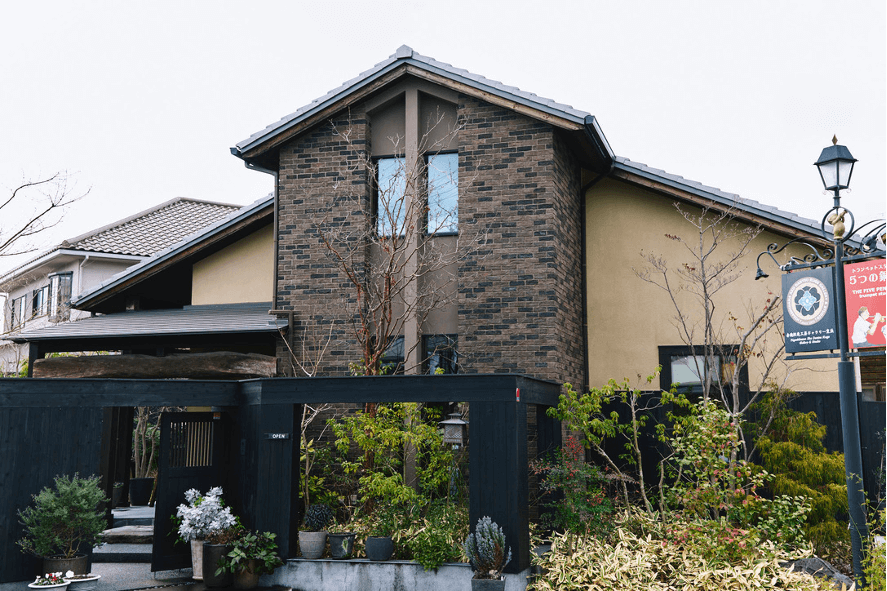
Ako Nishijin Workshop & Gallery Higashihama
69 Higashihama-cho, Ako City, Hyogo Prefecture
TEL: 0791-25-1395
Business Hours: 9:00 AM – 6:00 PM
Open irregularly
TRENDING
-
The Tattoos that Marked the Criminals of the Edo Period
Traditional tattoos were strong signifiers; murderers had head tattoos, while theft might result in an arm tattoo.

-
Chiharu Shiota, Red Threads of the Soul
Last year, more than 660,000 people visited the retrospective 'Chiharu Shiota: The Soul Trembles' exhibit at the Mori Art Museum.

-
‘Before Doubting Others, Doubt Yourself. Who Can Truly Say a Dish Isn’t What It Used to Be?’
In ‘A Non-Conformist’s Guide to Surviving Society’, author Satoshi Ogawa shares his strategies for navigating everyday life.

-
The Story of Sada Yacco, the Geisha who Bewitched Europe
Described by Dazed magazine as the first beauty influencer, she has been restored to her former glory since 2019.

-
Ito Jakuchu's Naturalist Paintings
From 15 September until 14 October 2018, the Petit Palais showcased the artist's iconic ‘Images of the Colourful Realm of Living Beings’.





